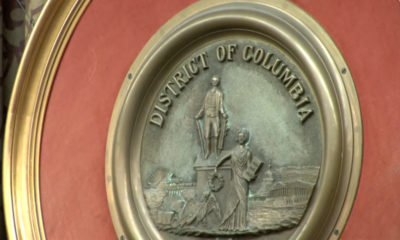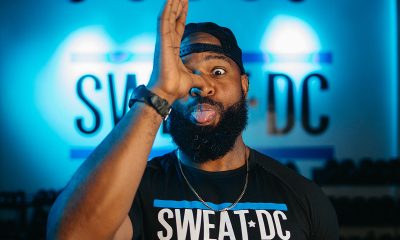a&e features
Newsom pardons LGBTQ and Black icon Rustin, stained by ‘historic homophobia’
‘Laws have been used as legal tools of oppression’
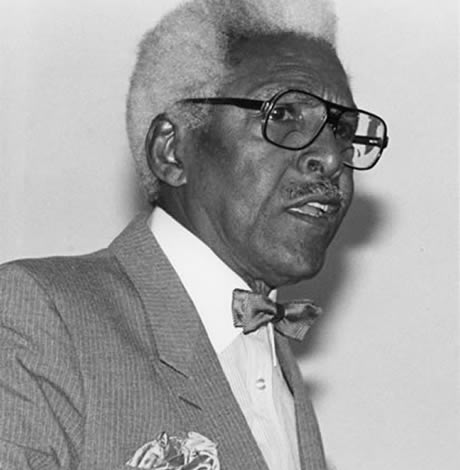
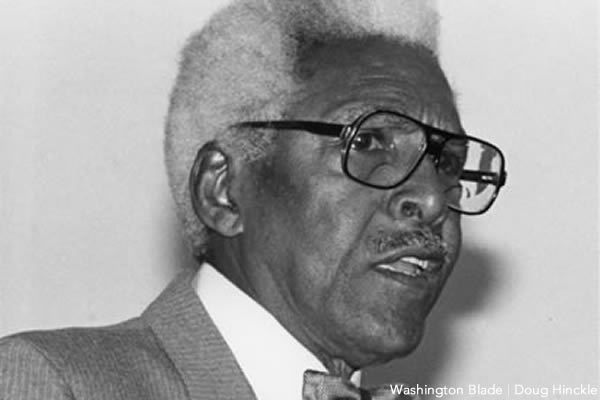
It was a patch of blue in the dark storm stalled over the divided states of America. On Feb. 5, California Gov. Gavin Newsom parted the pall and pardoned Bayard Rustin, mentor to Rev. Martin Luther King Jr. and chief organizer of the 1963 March on Washington. Though President Barack Obama posthumously awarded Rustin the Medal of Freedom in 2013, the gay civil rights icon still had the stain of a 1953 “morals charge” arrest in Pasadena on his lifetime of achievement.
“In California and across the country, many laws have been used as legal tools of oppression, and to stigmatize and punish LGBTQ people and communities and warn others what harm could await them for living authentically,” Newsom said in a statement. “I thank those who advocated for Bayard Rustin’s pardon, and I want to encourage others in similar situations to seek a pardon to right this egregious wrong.”
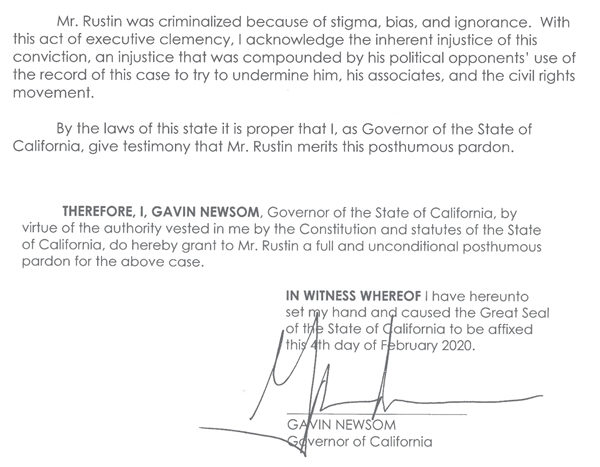
Excerpt of the pardon certificate
Rustin’s pardon launches a new clemency initiative for people who were prosecuted in California for being gay. In 1970, after the Stonewall riots and the movement for Gay Liberation, Assemblymember Willie Brown introduced the Consenting Adult Sex Bill to repeal the sodomy law and decriminalize gay sex. Five years later, with help from San Francisco Mayor George Moscone, the bill was finally passed and signed into law by Gov. Jerry Brown on May 12, 1975. But those convicted of engaging in consensual adult sexual conduct remained on the Sex Offender Registry until 1997, when a new law established a process enabling individuals to request removal. However, the original criminal conviction remained.
Newsom’s announcement acknowledges the systemic persecution of LGBTQ people and offers legal reparation.
“In California and across the country, charges like vagrancy, loitering, and sodomy have been used to unjustly target [LGBTQ] people. Law enforcement and prosecutors specifically targeted LGBTQ individuals, communities and community spaces for criminal prosecution. Now, as a proudly LGBTQ-allied state, California is turning the page on historic wrongs,” says the press release.
“There’s a cloud hanging over him because of this unfair, discriminatory conviction, a conviction that never should have happened, a conviction that happened only because he was a gay man,” state Sen. Scott Wiener, chair of California’s legislative LGBTQ caucus said Jan. 21 at a news conference with Assemblymember Shirley Weber, chair of the state’s Legislative Black Caucus, formally asking for a pardon.
“I’m thrilled that Governor Newsom is pardoning Bayard Rustin and that he acted so quickly and decisively in response to our request. I also applaud the Governor for broadening this work to provide other criminalized LGBT people with a path to clear their records of wrongful convictions on homophobic charges. These actions are consistent with the Governor’s deep and longstanding support for the LGBT community,” Wiener said in a statement. “Generations of LGBT people – including countless gay men – were branded criminals and sex offenders simply because they had consensual sex. This was often life-ruining, and many languished on the sex offender registry for decades. The Governor’s actions today are a huge step forward in our community’s ongoing quest for full acceptance and justice.”
“On behalf of the Black Caucus, I want to thank the Governor for granting this posthumous pardon. The Arc of Justice is long, but it took nearly 70 years for Bayard Rustin to have his legacy in the Civil Rights movement uncompromised by this incident. Rustin was a great American who was both gay and black at a time when the sheer fact of being either or both could land you in jail,” said Weber. “This pardon assures his place in history and the Governor’s ongoing commitment to addressing similar convictions shows that California is finally addressing a great injustice.”
“Civil rights champion Dr. Martin Luther King, Jr. said, ‘The time is always right to do what is right.’ For our friend Governor Newsom, that time is today. We are grateful to the governor for demonstrating our California values by pardoning civil rights hero, Bayard Rustin — a trusted aide to Dr. King — and for creating a system for other LGBTQ+ people to seek pardon from unjust convictions, said Equality California Executive Director Rick Zbur. “Today, Governor Newsom, and indeed the entire Golden State, did the right thing.”
That the pardon comes at the beginning of Black History Month is notable. On the 50th anniversary of the 1963 March on Washington, Professor Henry Louis Gates Jr. wrote on The Root: “I ask that if you teach your children one new name from the heroes of black history, please let it be Bayard Rustin.”
“For decades, this great leader, often at Dr. King’s side, was denied his rightful place in history because he was openly gay,” said President Obama, presenting Rustin’s medal to his longtime partner, Walter Naegle on Aug. 8, 2013. “No medal can change that, but today, we honor Bayard Rustin’s memory by taking our place in his march towards true equality, no matter who we are or who we love.”
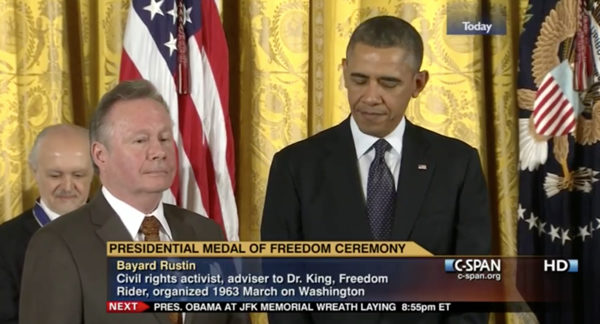
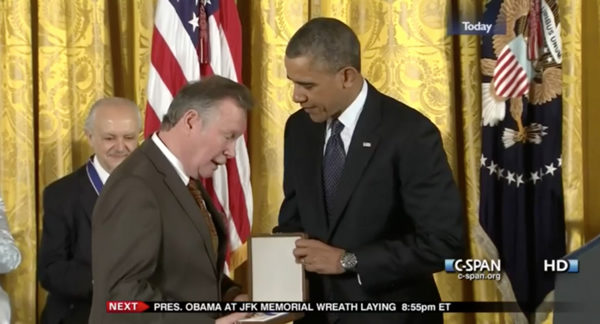
Born in 1912, Rustin learned about racism early on learned from his a Quaker grandmother in his West Chester, Pennsylvania hometown. She was also a member of the NAACP and intellectual civil rights leaders such as W.E.B. Du Bois and James Weldon Johnson were house guests.
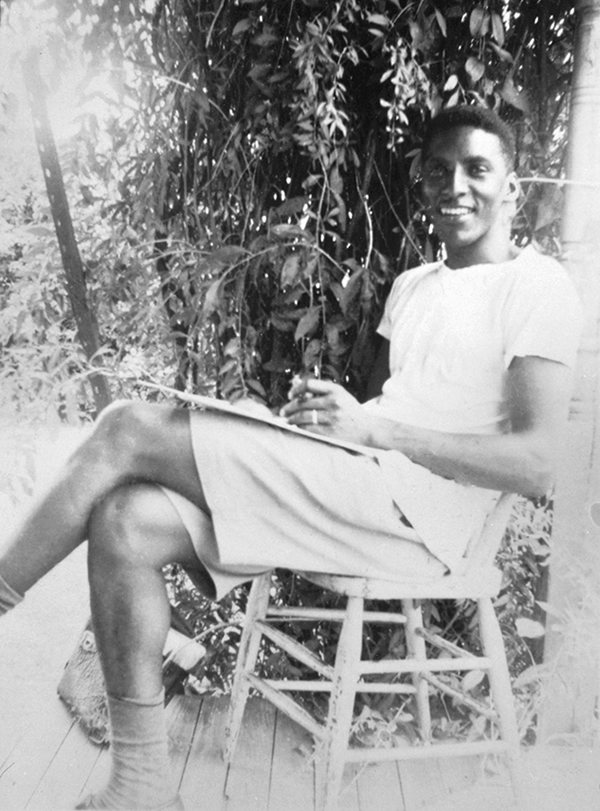
In high school, Rustin challenged the racially discriminatory Jim Crow laws by defying the rules to sit in the segregated balcony of a movie theater — for which he was arrested, as he recalled in the documentary Brother Outsider: The Life of Bayard Rustin.
“I once went into the little restaurant next to the Warner Theatre, and—can you believe it?—there was absolute consternation. That was the first occasion in which I knew West Chester had three police cars. They surrounded the place as if we were going to destroy motherhood. I purposely got arrested, and then I made an appeal that all the black people and white people who were decent-minded should give 10 cents to get me out of jail. And I got out, because they took up a collection.”
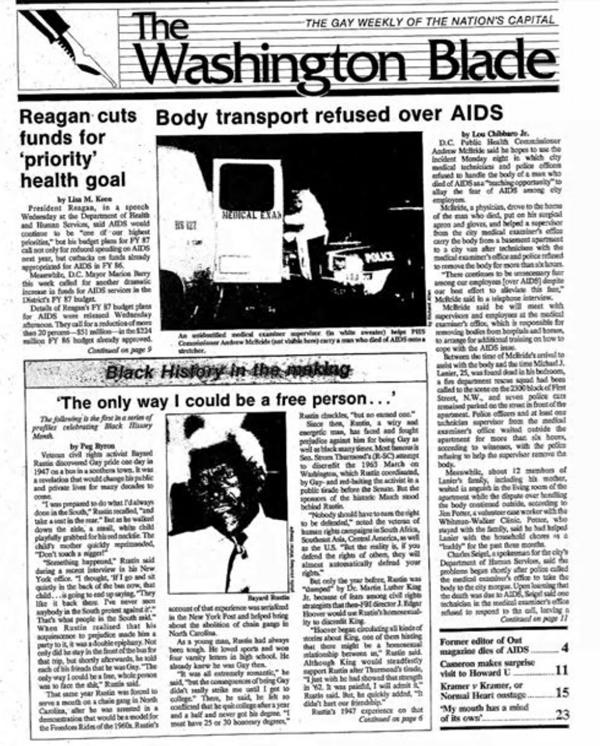
Rustin knew he was gay in high school, he told Washington Blade reporter Peg Byron on Feb. 5, 1986. But he remained closeted until 1947 after an encounter with a child on a bus trip in the South:
“One of the reasons that I decided that I should no longer remain in the closet came from an experience I had as a black. One day, in 19…, way back as far as 1947, I walked into a bus in the South, all prepared to do what I had always done in the South. Take a seat in the rear.
As I was going by the second seat to go to the rear, a white child reached out for the red necktie I was wearing and pulled it. Whereupon its mother said, “Don’t touch a nigger.”
Something happened, and I said to myself, If I go and sit quietly in the back of that bus now, that child who was so innocent of race relations that it was going to play with me, will have seen so many blacks go in the back and sit down quietly that it’s going to end up saying, “They like it back there, I’ve never seen anybody protest against it.” That’s what people in the South would say.
So I said, I owe it to that child, not only to my own dignity, but I owe it to that child that it should be educated to know that blacks do not want to sit in the back, and therefore I should get arrested letting all these white people in the bus know that I do not accept that.
Now, it occurred to me shortly after that that it was an absolute necessity for me to declare homosexuality, because if I didn’t I was a part of the prejudice. I was aiding and abetting…
Peggy Byron: Sitting in the back, yeah…
BR: … the prejudice that was a part of the effort to destroy me. And that in the long run the only way I could be a free whole person was to face the shit.
But from my own experience I know how long it can take till you free yourself. Thirty-four years is a long time to free yourself.”
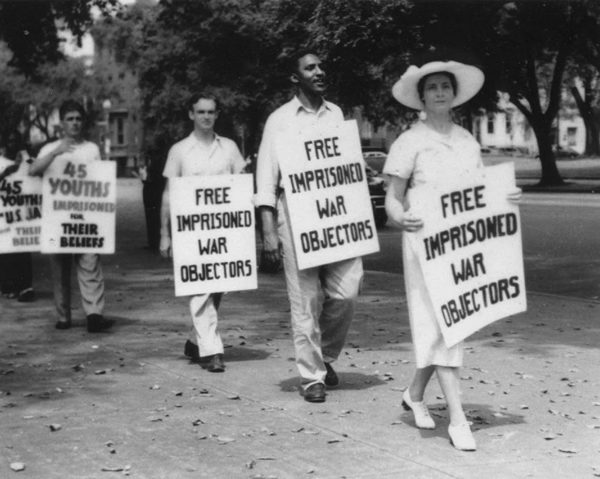
During those closeted years, he organized strikes in college, advocated to free the Scottsboro Boys, in 1936 joined the Young Communist League which fought segregation but left disillusioned when they dropped fighting Jim Crow to fight to get the US into World War II. Rustin then found two other pacifists – A. Philip Randolph, the head of the Brotherhood of Sleeping Car Porters and A. J. Muste, leader of the Fellowship of Reconciliation (FOR), who both became mentors.
By now Rustin was on FBI Director J. Edgar Hoover’s radar. Muste hired him to handle race relations. In 1941, the three pacifist socialists proposed a march on Washinton to protest segregation in the military and employment. After a meeting with President Roosevelt in the White House, FDR issued Executive Order 8802 (the Fair Employment Act) banning discrimination in defense industries and federal agencies. As an act of good faith in response, Randolph cancelled the march over Rustin’s objections. The military was finally desegregated in 1948 by President Truman, meaning black Americans fought racism and the Nazis and fascism, only to come home to Jim Crow.
Meanwhile, Rustin came to California to try to help Japanese Americans who were losing their property and their rights as the federal government imprisoned them in internment camps. He also foreshadowed the Freedom Rides by trying to desegregate interstate bus travel in 1942, for which he was arrested outside Nashville, beaten but never charged.
By 1948, the year after he came out, Rustin was well-known enough to be invited to India for an international pacifist conference.
“Mahatma Gandhi had been assassinated earlier that year, but his teachings touched Rustin in profound ways. ‘We need in every community a group of angelic troublemakers,’ he wrote after returning to the States. ‘The only weapon we have is our bodies, and we need to tuck them in places so wheels don’t turn,’” Prof. Gates writes.
The incident for which Rustin was pardoned happened in 1953. By now a respected organizer, Rustin traveled around the country giving speeches. After a speech one January night in Pasadena, police officers found him having sex with two white men in a parked car. Rustin was arrested, sentenced to jail for 60 days and was forced to register as a sex offender for the “morals charge.”
The arrest severely damaged his career in a country terrified by McCarthyism. He was forced to cancel speaking engagements and resigned from his leadership position with Muste’s Fellowship for Reconciliation.
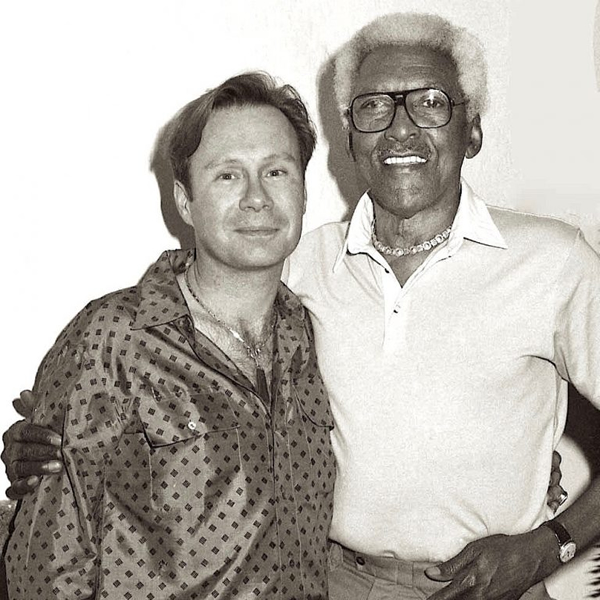
He struggled to find work, resorting to manual labor as a furniture mover, Naegle said later.
“I know now that for me sex must be sublimated if I am to live with myself and in this world longer,” he wrote in a March 1953 letter.
In 1955, Rustin secretly wrote “Speak Truth to Power: A Quaker Search for an Alternative to Violence.“In 1956, he found his way back into the civil rights movement, traveling to Alabama to advise Rev. Martin Luther King Jr. on how to organize his Montgomery Bus Boycott using Gandhi’s principles of non-violence. The two were introduced by Rustin’s friend Coretta Scott.
“King really had a very, very limited idea about nonviolence,” Julian Bond, who helped found the Student Nonviolent Coordinating Committee, told Democracy Now’s Amy Goodman. “It is Bayard Rustin who really tutored him, who said, ‘This is what you have to do.’ Rustin was horrified to see these pistols in King’s home, you know, and these armed guards around King’s home, because it just went against everything he believed in about nonviolence. If it hadn’t been for Bayard Rustin, Dr. King wouldn’t have had any understanding, I don’t think, of nonviolence. And Rustin tutored him and made him into the person we know he became.”
But that arrest record and the “open secret” of his homosexuality haunted him. Rustin was forced to resign from the Southern Christian Leadership Conference he co-founded after the powerful New York Rep. Adam Clayton Powell Jr. threatened to tell the press that he and King were lovers.
Gay historian, John D’Emilio author of “Lost Prophet: The Life and Times of Bayard Rustin,” told Amy Goodman:
“Bayard himself was very aware that given social attitudes towards homosexuality and gay men and lesbians, he couldn’t wear it on his sleeve. He couldn’t, you know, be out there with the rainbow flag. This was before gay liberation. So Bayard himself was perfectly happy to keep this in the background and to move out of the way, if that was going to be good for the movement.
What made him unhappy and what made him feel like he had been done wrong was when people disavowed him. And there was a point, in 1960, when Rustin and Mr. Randolph and Dr. King were part of organizing major demonstrations at the presidential conventions, Republicans and Democrats, and at that point Representative Adam Clayton Powell from Harlem didn’t like the fact that these radicals, someone like Bayard Rustin, was getting so much attention and moving into his sphere in the Democratic Party.
And he put out the word to Dr. King that if you don’t distance yourself from Bayard Rustin, I am going to claim that there is something going on between the two of you. And that scared Dr. King, and Bayard made the decision to resign from his position. But he also expected at that point that he would be defended. And when he wasn’t defended, it was—it was painful. It was very painful. And he spent a couple of years, mostly—in the early ’60s, mostly involved in the peace movement rather than in the civil rights movement because of that rupture. And it’s the March on Washington that brought him back into the center of things.”
“That was around 1962,” Rustin told the Washington Blade via the special Making Gay History podcast. “And, naturally, I took the position that if people feel that I am a danger to some important movement, I would leave. But the thing which distressed me was that if… if Martin had taken the strong stand then that he took a year later, in ’63, vis-à-vis Strom Thurmond, he could have overcome it and kept me. But I understand his doing it, and I hold no grief with him about having done it. I just wish that he had shown the strength in ’62 that he showed when he backed me completely in ’63. But he was a year older and had another year’s experience.”
A. Philip Randolph brought Rustin back into the fold to organize the 1963 March on Washington for Jobs and Freedom but NAACP’s Roy Wilkins saw Rustin as a liability and forced him to take a deputy position.
But then FBI Director J. Edger Hoover slipped Rustin’s arrest record to rabidly anti-gay South Carolina Sen. Strom Thurmond – who had secretly fathered a child with his African-America maid. Three weeks before the march, Thurmond went public, trying to destroy the unprecedented event by denouncing Rustin as a gay communist and placing his arrest record in the congressional record.
Rustin told the Washington Blade:
“Now this became very clear to me in 1963, when I was organizing the March on Washington. And Strom Thurmond stood up in the Senate of the United States and for three-quarters of an hour, attacked me as a draft dodger, which was untrue, because I was a conscientious objector and well known as being a Quaker opposed to all violence. He attacked me as a former member of the Young Communist League, which was true. I had been. He attacked me as a homosexual. Which of course I was.
PB: You were the original commie-pinko-fag of the day, I suppose.”
BR: Yeah, exactly. Now, there were 10 leaders of that march. One of the most important Jews, the most important Catholic, the most important Protestant, Walter Reuther representing the trade union movement, and six black civil rights leaders.
When he attacked me, I had absolutely no basic apprehension and for a very good reason, because I had spent a great deal of my life defending prejudice against Catholics, against trade unions, against Jews, against blacks, against Protestants, and therefore I inwardly knew that those leaders, knowing of my history, had to come to my defense. And they did. And the important thing was that they voted that only one person should speak, and that was the founder of the march, Mr. A. Philip Randolph.”
For what spans five pages in the Congressional Record, Thurmond not only submitted the arrest record but the news articles about the arrest and conviction.
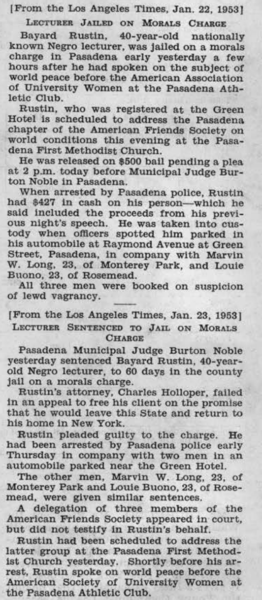
“The article states that he was convicted in 1953 in Pasadena, California, of a morals charge. The words ‘morals charge’ are true. But this is a clear-cut case of toning down the charge. The conviction was sex perversion,” says Thurmond.
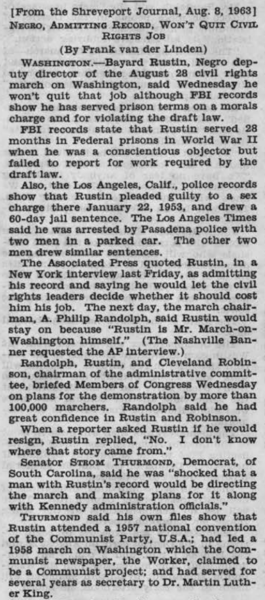
“The senator is not interested in me if I were a murderer, a thief, a liar or a pervert. The senator is interested in attacking me because he is interested in destroying the movement. He will not get away with this,” Rustin said.
King and the other Big Six backed Rustin up this time because the attacks came from one of the worst Southern white supremacists. But after the march, Rustin was quietly denied his role as the seventh in the Bix Six group of civil rights leaders who called for the march: A. Philip Randolph, Roy Wilkins, Rev. Dr. Martin Luther King Jr., John Lewis, Jim Farmer, Whitney Young when the chief organizer of the march was disinvited to the White House to celebrate with President John F. Kennedy.
And yet, according to an extensive CNN report commemorating the 50th anniversary of the march, it was Rustin who saved the march for the organizers – from a Kennedy take over.
“The Kennedys were almost morbidly afraid of this march. They understood there’d been nothing like it,” Rep. Eleanor Holmes Norton, D-District of Columbia, who helped plan the march, told CNN.
“The Kennedy administration was afraid that if there was violence on the march, it would mean that the Civil Rights Act, which John F. Kennedy had just introduced, would never get passed,” said march planner Rachelle Horowitz. “When we first began planning the march, there was a concerted effort by the Kennedy administration to get it called off and to not let it take place.”
“They kept a watchful eye on the planning of the march,” said John Lewis, the 23-year-old elected to lead the Student Nonviolent Coordinating Committee. “They stayed in touch with the (march) leadership,” which had been broadened to include four white leaders, representatives of the Protestant, Jewish and Catholic faiths, and civil rights advocate and United Auto Workers president Walter Reuther.
Reuther was recruited by the White House “to infiltrate the march and steer it away from radical rhetoric and direct action,” wrote Charles Euchner in his book “Nobody Turn Me Around,” about the historic march. “And so he did.”
Though JFK had come around to the idea of the march, Attorney General Robert F. Kennedy’s office inside the Justice Department’s room 5110 “was the command center,” Jack Rosenthal, who was the department’s assistant press officer at the time, told CNN.
“There was a proposal on the table that Kennedy speak to the March on Washington,” march planner Courtland Cox told CNN. “And Bayard knew this would have been a disaster because it would’ve been taken over by (Kennedy) just because he’s president. It would’ve been Kennedy’s march.”
From CNN:
“So, Cox said Rustin and he excused themselves from that particular meeting and took a walk to the bathroom. Clearly flummoxed about the problem, Rustin took a sip from his back-pocket flask and came up with an idea on the fly.
“And Bayard got back into the meeting and he literally made this up,” Cox recalled. “He said that he heard … if the president spoke the Negroes were going to stone him.”
After that, the idea of Kennedy speaking at the march was never considered.”
None of the feared outbreaks of violence occurred.
“After the March on Washington was over, President Kennedy had invited us back down to the White House,” Lewis said. “He stood in the door of the Oval Office and he greeted each one of us. He was like a beaming, proud father. He was so pleased. So happy that everything had gone so well.”
Kennedy told King: “And you had a dream,” added Lewis.
Rustin’s role was overshadowed – as were his remarks at the march that August 28, 1963:
“We demand that segregation be ended in every school district in the year 1963! We demand that we have effective civil rights legislation—no compromise, no filibuster—and that include public accommodations, decent housing, integrated education, FEPC and the right to vote. What do you say? We demand the withholding of federal funds from all programs in which discrimination exists. What do you say?”
Rustin died of a perforated appendix on August 24, 1987, survived by Walter Naegle, his partner of 10 years.
One last thing, Julian Bond told Amy Goodman:
“I could not think of anybody else who at the time would have stepped forward, taken hold of this March on Washington, pull together all these hundreds of thousands of peoples, the buses, the trains. You know, I saw something just recently: They made 800,000 sandwiches. Imagine that. And it was all done at Bayard Rustin’s desire.
One thing I think we’re not hearing about Bayard Rustin is his sense of humor. He once said that Dr. King couldn’t bring vampires to a bloodbath. That was the kind of organizer Dr. King was not. But Bayard Rustin knew he was an organizer and was just wonderful at getting people to do things that they didn’t think they could do or didn’t know they wanted to do. He was just a great, great person….
I think those of us who were there in 1963 didn’t immediately realize how significant this was. As you said during the program, we didn’t see many people there early in the morning. The crowd grew and grew and grew. But even when they were all there, you had no idea how many there were. You know, you can’t look out at this mass of people and say, “This is 250,000 people.” You just have no idea who they are. And I think, for me, driving back to Atlanta later that day and then reading newspapers the next day in Atlanta and hearing what other people had to say about it, only then would we began to understand the significance of this thing—the largest gathering ever at a civil rights protest.
People came together to demand civil rights in America, and that was tremendously significant. But, as you say, if you compare these demands that Bayard read at the march with where we are today, you can see that clearly most of these things have not been achieved, and we still have a long, long way to go.”
While Rustin didn’t attend the White House meeting, he and A. Philip Randolph did make the cover of LIFE magazine.
“Rustin was one of the most important social justice activists in the U.S. in the 20th century,” says historian John D’Emilio.
That 1953 arrest record hung like an invisible chain around Rustin’s neck. Now he is really, finally free.
If you think you are eligible and would like to seek clemency, you can apply for a pardon and receive updates and information on the clemency initiative at www.gov.ca.gov/clemency
a&e features
Your guide to D.C.’s queer New Year’s Eve parties
Ring in 2026 with drag, leather, Champagne, and more
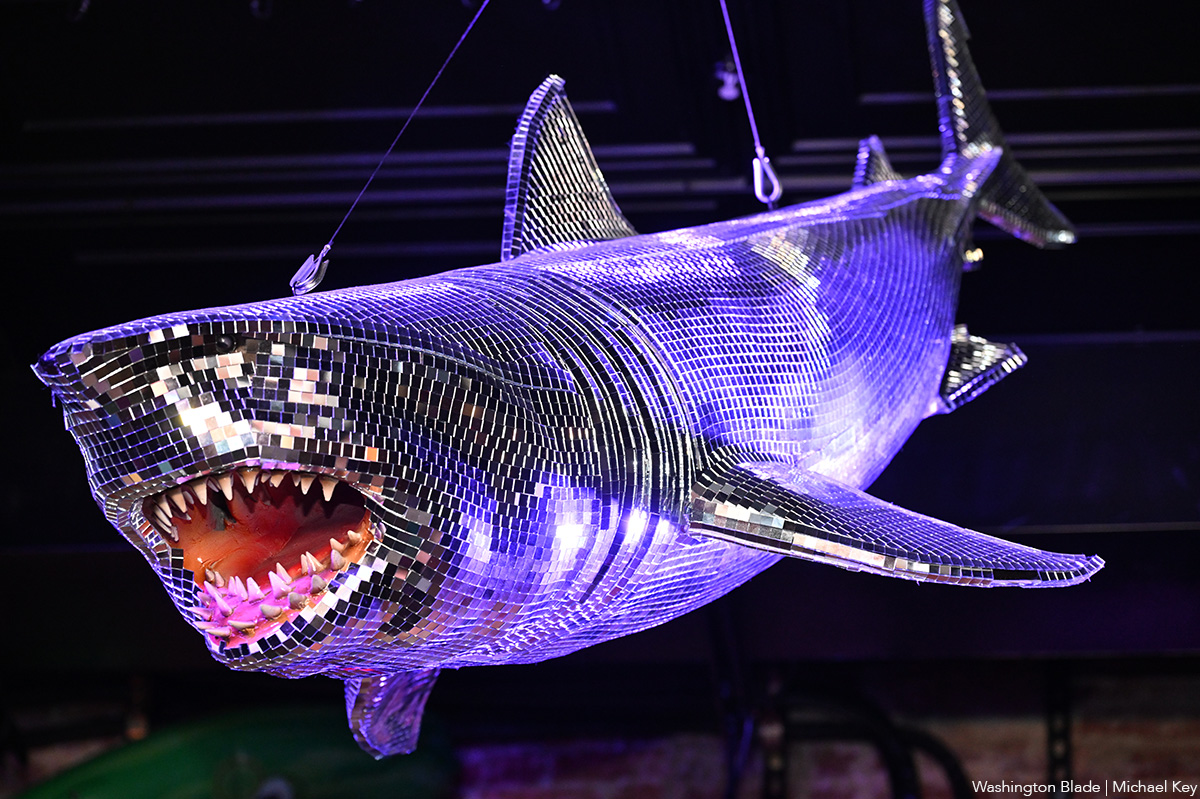
With Christmas in the rear view mirror, we can turn our attention to ringing in a much-anticipated New Year with a slew of local LGBTQ parties. Here’s what’s on tap.
Pitchers
This spacious Adams Morgan bar is hosting the “Pitchers’ Perfect New Year’s Eve.” There will be a midnight Champagne toast, the ball drop on the big screens, and no cover, all night long. The bar doesn’t close until 4 a.m., and the kitchen will be open late (though not until close). All five floors will be open for the party, and party favors are promised.
Trade
D.C.’s hottest bar/club combo is leaning into the Shark motif with its NYE party, “Feeding Frenzy.” The party is a “glitterati-infused Naughty-cal New Year’s Even in the Shark Tank, where the boats are churning and the sharks are circling.” Trade also boasts no cover charge, with doors opening at 5 p.m. and the aforementioned Shark Tank opening at 9 p.m.. Four DJs will be spread across the two spaces; midnight hostess is played by Vagenesis and the two sea sirens sensuously calling are Anathema and Justin Williams.
Number Nine
While Trade will have two DJs as part of one party, Number Nine will host two separate parties, one on each floor. The first floor is classic Number Nine, a more casual-style event with the countdown on TVs and a Champagne midnight toast. There will be no cover and doors open at 5 p.m. Upstairs will be hosted by Capital Sapphics for its second annual NYE gathering. Tickets (about $50) include a midnight Champagne toast, curated drink menu, sapphic DJ set by Rijak, and tarot readings by Yooji.
Crush
Crush will kick off NYE with a free drag bingo at 8 p.m. for the early birds. Post-bingo, there will be a cover for the rest of the evening, featuring two DJs. The cover ($20 limited pre-sale that includes line skip until 11 p.m.; $25 at the door after 9 p.m.) includes one free N/A or Crush, a Champagne toast, and party favors (“the legal kind”). More details on Eventbrite.
Bunker
This subterranean lair is hosting a NYE party entitled “Frosted & Fur: Aspen After Dark New Year’s Eve Celebration.” Arriety from Rupaul Season 15 is set to host, with International DJ Alex Lo. Doors open at 9 p.m. and close at 3 p.m.; there is a midnight Champagne toast. Cover is $25, plus an optional $99 all-you-can-drink package.
District Eagle
This leather-focused bar is hosting “Bulge” for its NYE party. Each District Eagle floor will have its own music and vibe. Doors run from 7 p.m.-3 a.m. and cover is $15. There will be a Champagne toast at midnight, as well as drink specials during the event.
Kiki, Shakiki
Kiki and its new sister bar program Shakiki (in the old Shakers space) will have the same type of party on New Year’s Eve. Both bars open their doors at 5 p.m. and stay open until closing time. Both will offer a Champagne toast at midnight. At Kiki, DJ Vodkatrina will play; at Shakiki, it’ll be DJ Alex Love. Kiki keeps the party going on New Year’s Day, opening at 2 p.m., to celebrate Kiki’s fourth anniversary. There will be a drag show at 6 p.m. and an early 2000s dance party 4-8 p.m.
Spark
This bar and its new menu of alcoholic and twin N/A drinks will host a NYE party with music by DJ Emerald Fox. Given this menu, there will be a complimentary toast at midnight, guests can choose either sparkling wine with or without alcohol. No cover, but Spark is also offering optional wristbands at the door for $35 open bar 11 p.m.-1 a.m. (mid-shelf liquor & all NA drinks).
a&e features
Local, last-minute holiday gift ideas
Celebrate the season while supporting area businesses

The DowntownDC Holiday Market is bustling. Union Station is decked out with its annual Christmas tree. Washingtonians have wrapped their houses and apartment balconies with festive lights and holiday decorations. The holiday season is here. And with stockings to fill and empty space under the tree, Washington’s local shops and artists have plenty to offer.
Show your LGBTQ and D.C. pride with the Washington Blade’s annual holiday gift guide.
To embrace the holiday buzz: The Blanco Nwèl cocktail from Alchy Cocktails. This Caribbean eggnog is one of Alchy Cocktail’s seasonal holiday cocktails. The flavor profile is similar to coquito, a traditional Puerto Rican Christmas drink with a coconut base. As a queer and Caribbean-owned business, Alchy Cocktails has been based out of Washington since 2021. Blanco Nwèl is available in both cocktail ($24) and mocktail ($12) online and at a variety of holiday markets, including the Tingey Plaza Holiday Market, the Flea Market at Eastern Market, Union Station’s Main Hall Holiday Market, and more. ($24)
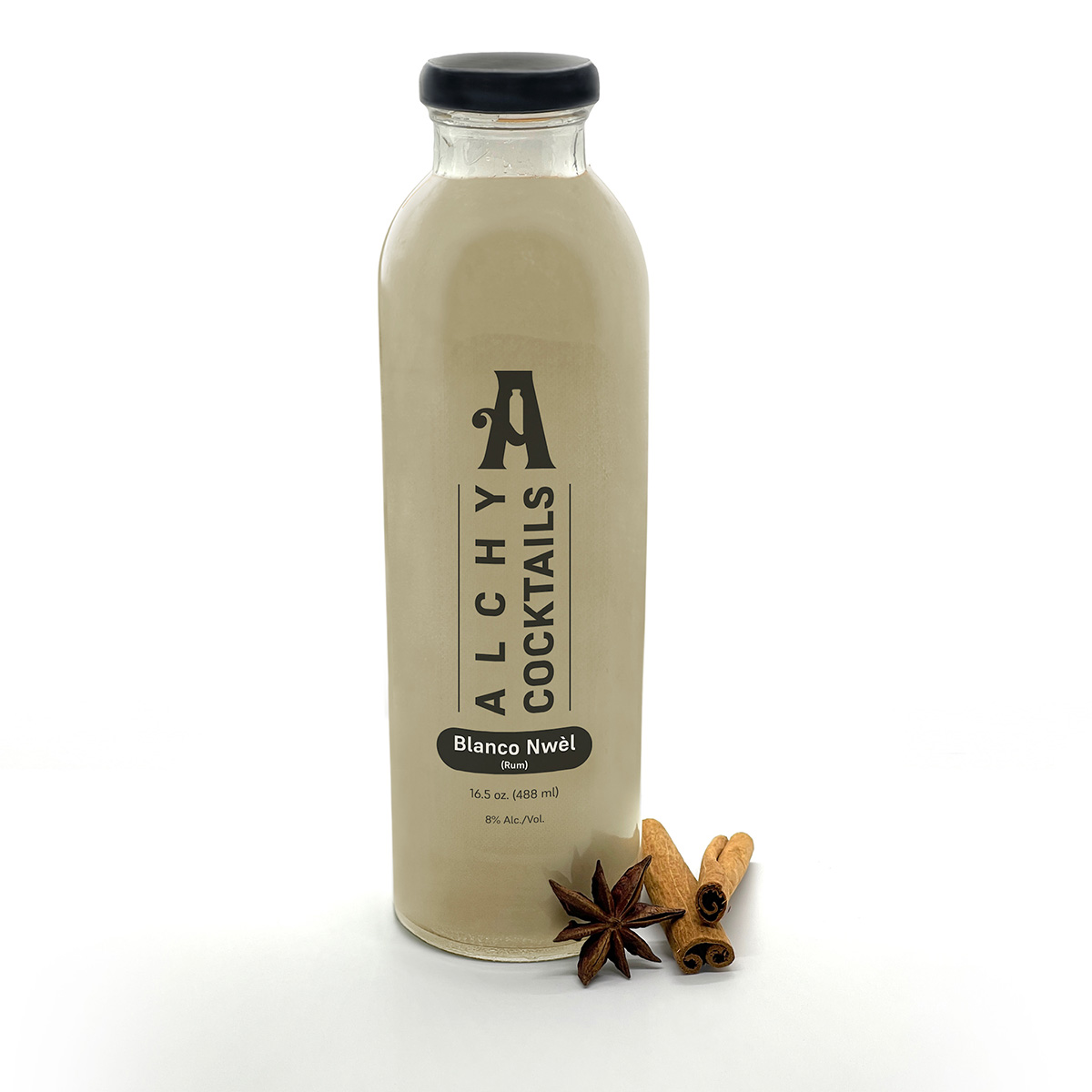
A spicy bite: Gordy’s Cajun Okra from Salt and Sundry. These spicy, tangy pickles pull on Southern Cajun-style flavors, packing a punch with paprika, cayenne, and more. Gordy’s is an LGBTQ-owned and Washington-based brand, making this gift an opportunity to support a local LGBTQ business straight from the jar. This pantry staple is available on Salt & Sundry’s website and at its locations in Union Market, Logan Circle, and its Georgetown holiday pop-up store. ($14)
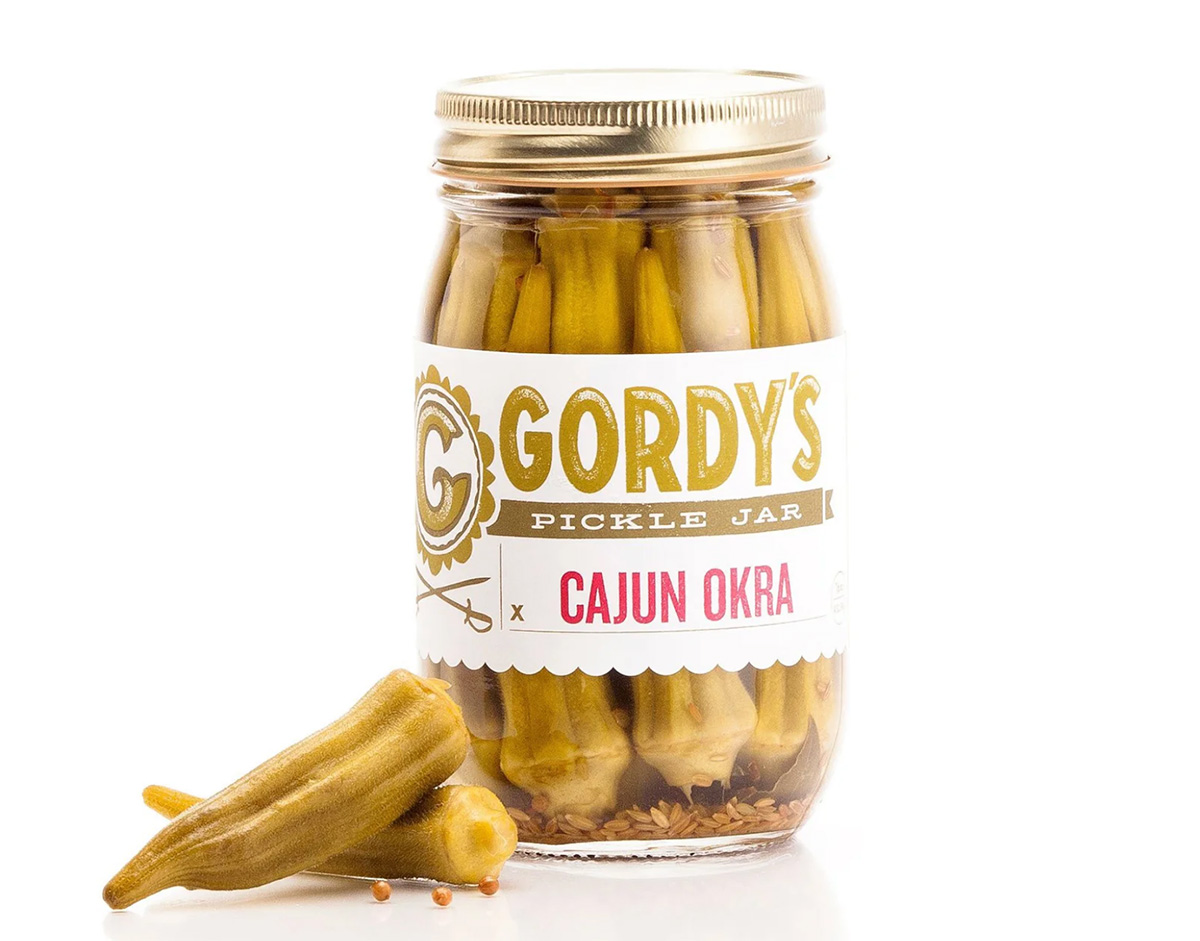

To celebrate Washington pride: The DC Landmark Tote Bag from The Neighborgoods. Native Washingtonians, visitors, friends and family alike will find something to love about this Washington-themed tote bag. Food trucks, the 9:30 Club, the Metro logo and pandas from the National Zoo are just some of the city’s landmarks depicted across the tote in a red, white, and blue color palette. The tote is a part of the DC Landmarks collection, which donates 10 percent of its sales to the American Civil Liberties Union. The Neighborgoods itself is a local, woman-owned business built out of a passion for screen-printing in 2013. The 100 percent cotton canvas tote is for sale online or at the DowntownDC Holiday Market. ($22)
To give friends and family their flowers: The Flowers Bandana from All Very Goods. This 100 percent cotton bandana was designed in Washington and hand printed in India. Its uniqueness comes in being covered with the faces of Black women, representing a “love letter to all women but especially Black women,” according to All Very Goods. The Black woman-owned and operated business, based out of Northwest Washington, has a mission to celebrate diversity and representation through its products. The bandana intends to give Black women their “flowers.” The Flowers bandana is available for purchase online. ($24)
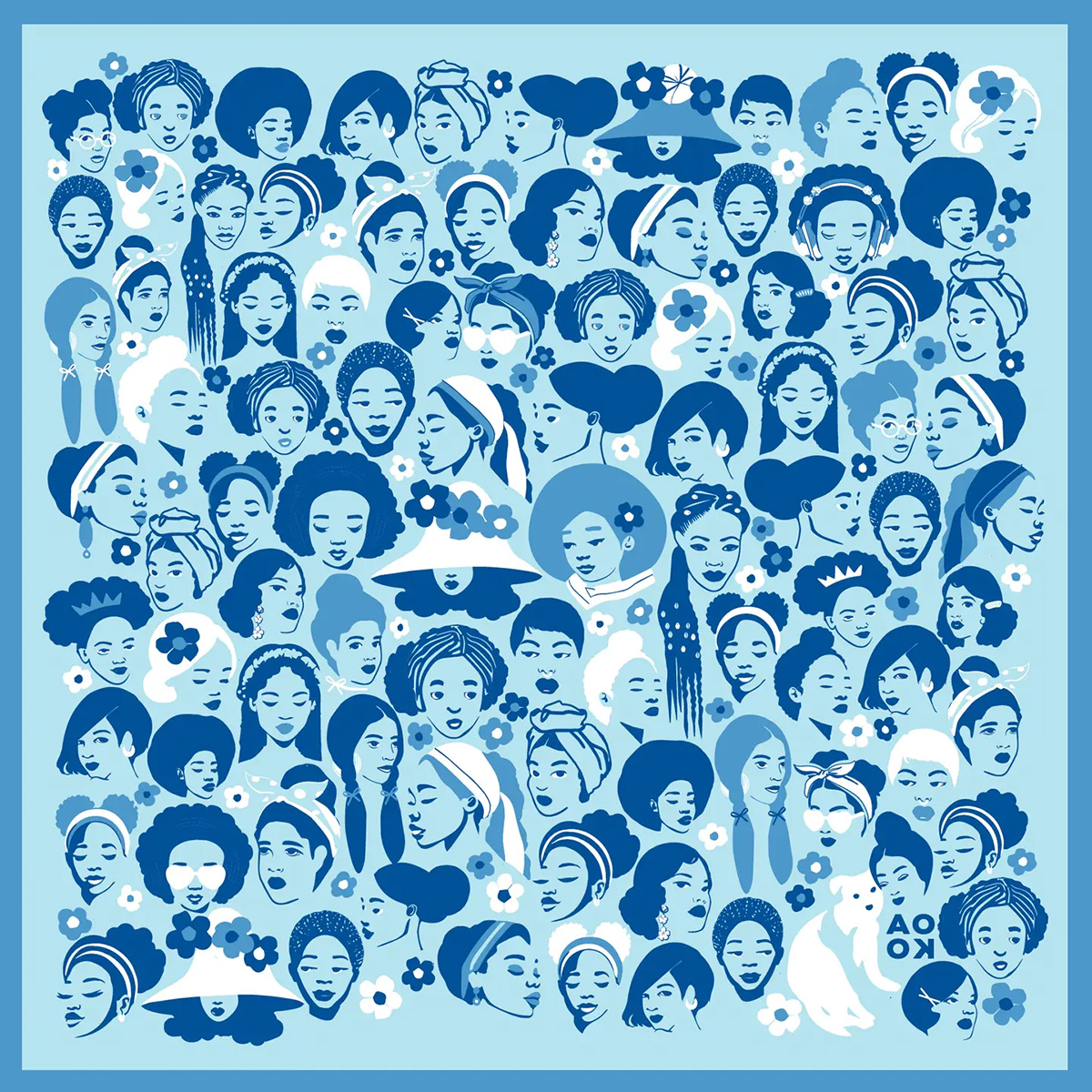
To unlock culinary creativity: The Curious Chef Gift Collection from Each Peach Market. This customizable collection of kitchen oddities — ranging from tinned fish to chili oil — is a quirky gift for the most inventive chefs. The collection is available in a Standard Santa, Extra Goodies and Super Holiday Size for up to $165. The Washington-based market, founded in 2013, permits customers to make the collection special by specifying what unique ingredients are packaged, including products made by local or LGBTQ brands. Each Peach Market offers assembly and pick up in-person at its Mount Pleasant shop and also offers local delivery and nationwide shipping via its website. ($85)
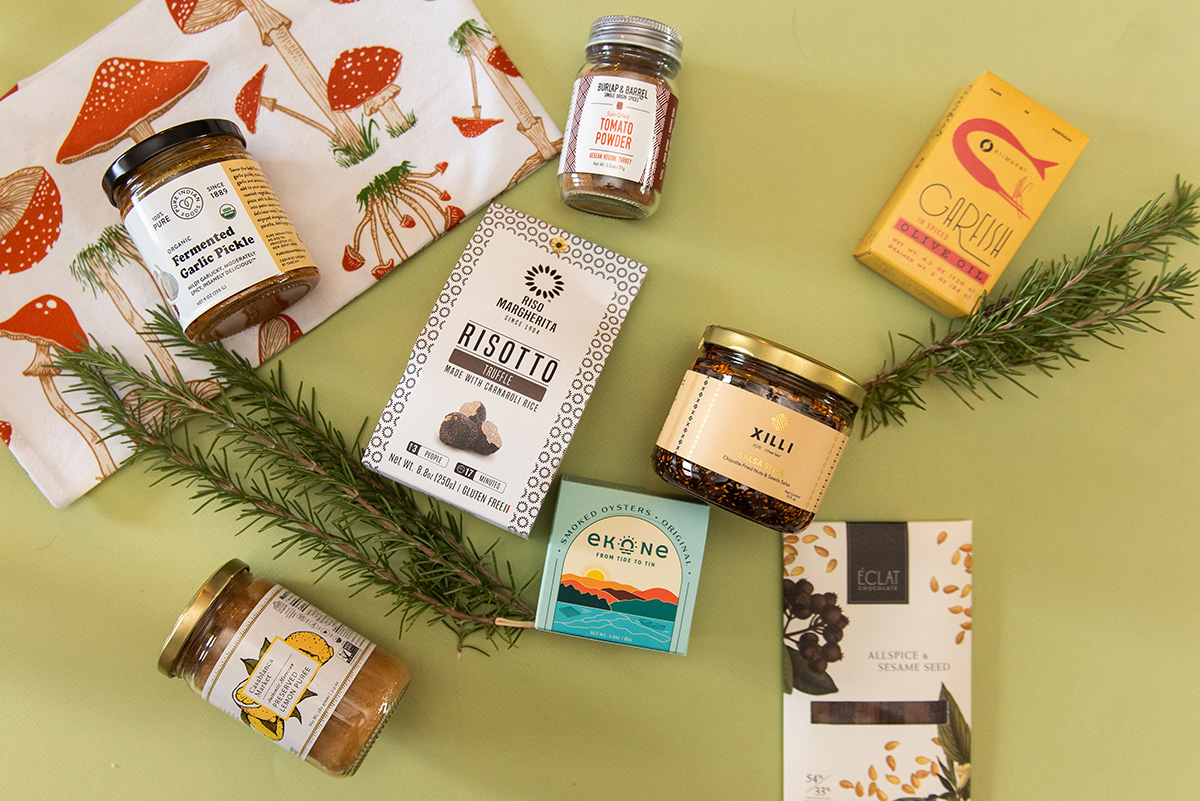
To give a touch of sweetness: The DC Landmark Chocolate Covered Oreo Holiday Cookies from Capital Candy Jar. Wrapped in a festive red bow, this box of nine cookies embraces love for Washington and the holiday season in one. Among the dark and milk chocolate covered cookies are images of the U.S. Capitol, the White House, the Lincoln Memorial, the Jefferson Memorial and festive hollies. The treat, packaged in a Hill East facility just a few blocks from the Capitol, is available for purchase online and at the DowntownDC Holiday Market. ($23.95)


To celebrate queer gaming: Thirsty Sword Lesbians from Labyrinth Games & Puzzles. This roleplaying game embraces lesbian culture by unlocking a world of swords, romance, and battle. Ideal for group settings, the book presents a system of world building and character identities that are best brought to life by creative minds. Labyrinth, which has been a local Washington business for more than 15 years, celebrates non-digital fun through games and puzzles that connect the community. This gift is offered online and at Labyrinth’s Capitol Hill location. ($29.99)
To make a bold statement: The “Resist” T-shirt from Propper Topper. This locally screen-printed black tee features the Washington flag designed within a raised fist, symbolizing both Washington pride, and political resistance. The shirt is made exclusively by Propper Topper, a local Washington business that evolved from a hat shop to a gift store since opening in 1990. The tri-blend unisex shirt is available both for pickup at Propper Topper’s Cathedral Heights location and shipping via the online site. ($32)
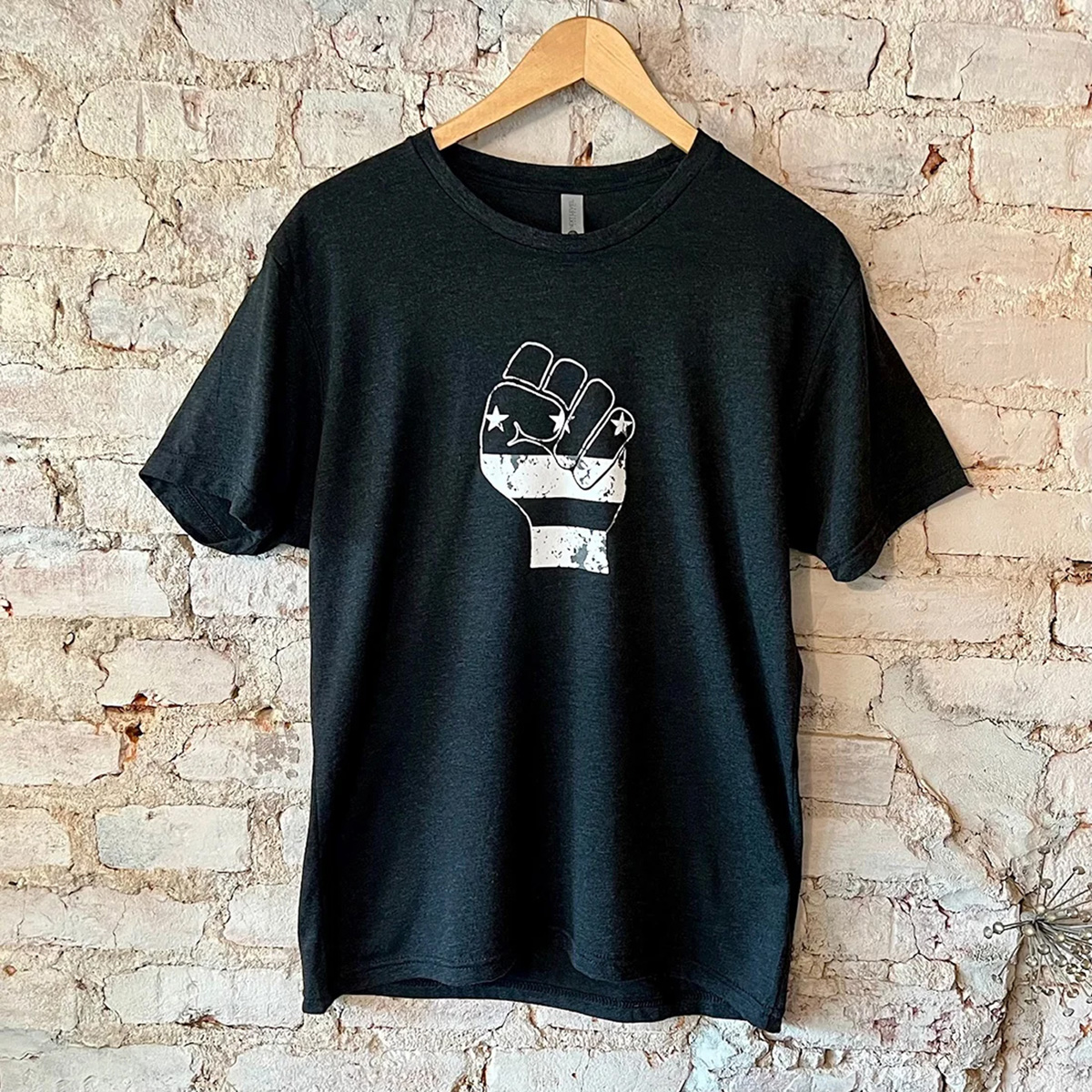
To keep it c(g)lassy: The Glass Ball earrings from Blue Moon Aquarius. Gifting can rarely go wrong when it comes to a new pair of earrings. The unique statement earrings — made of polymer clay, glass, and 18k gold plating over surgical steel — are hand cut, sanded and assembled in Washington, meaning each set is unique. Blue Moon Aquarius, a local brand, is known for its small batch jewelry and home decor designed with clay materials. Available in oxblood, hunter green, lavender, and bluestone color palettes, these earrings are available for purchase on Blue Moon Aquarius’ website and at the DowntownDC Holiday Market. ($48)
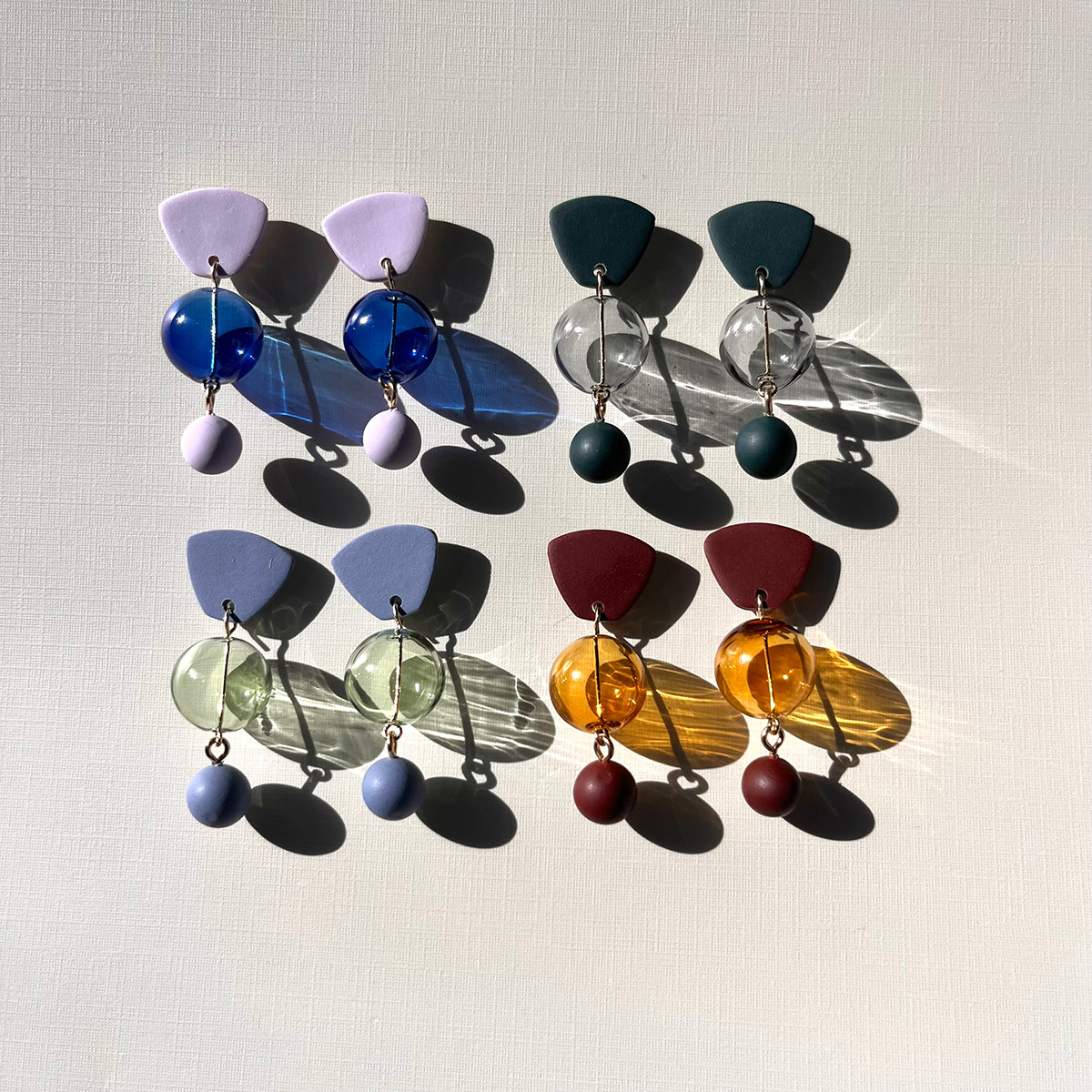
To elevate a holiday tea or charcuterie party: The Honey Flight: Tea Lover’s Selection from BannerBee. This local honey company presents the ideal gift to make cozying up with a cup of tea slightly more special. The Honey Flight contains three types of raw wildflower honey infused with fair trade Ugandan vanilla bean, chai spices, and locally sourced lemon thyme herb. The gift is also an opportunity to uplift a family company based in the Mid-Atlantic that offers all-natural, sustainable products. The flight is available online, at the DowntownDC Holiday Market or at the Arlington Courthouse and Dupont Farmers’ Markets. ($36)

For Baltimore shoppers: If you’re in Charm City, don’t miss Balston Mercantile, opened by a gay couple in June. Their gorgeous shop in the Hampden neighborhood offers an array of unique, upscale finds, from barware and artwork to cookbooks and home decor and more. (849 W. 36th St.)
a&e features
Have yourself a merry John Waters Christmas
Annual holiday show returns to Alexandria and Baltimore
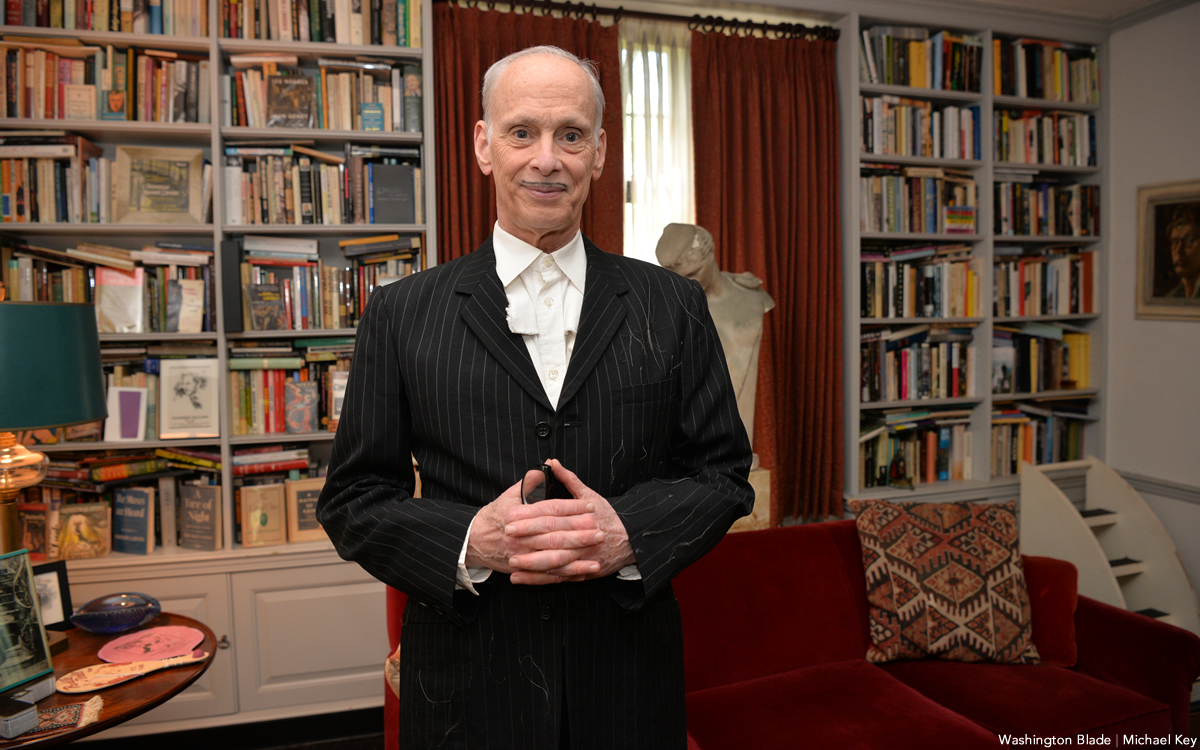
When it comes to iconic Christmas scenes in movies, none can top the tree-toppling tantrum thrown by cha-cha heels-deprived Dawn Davenport in John Waters’s fifth full-length feature “Female Trouble” from 1974. Therefore, it’s not surprising that Waters continues to make art out of Christmas, performing his spoken word Christmas tour in cities across the country. Waters has even more reason to celebrate with the release of his new red vinyl 7” single, a cover of Little Cindy’s “Happy Birthday Jesus (A Child’s Prayer)” on the A-side, and “A Pig Latin Visit From St. Nicholas” on the B-side. If you’re still looking for unique Christmas gifts, consider this record. As always, John was kind enough to make time for an interview in advance of his tour dates.
BLADE: John, in preparation for this interview with you, I went back and listened to Little Cindy’s original rendition of “Happy Birthday Jesus (A Child’s Prayer)” on your “A John Waters Christmas” CD.
JOHN WATERS: One thing I did, if you notice, I make the same stumble in my recording that she did in the original.
BLADE: It sounded to me like she got choked up.
WATERS: No, I think she just stumbles over a word, so I stumbled over the same word. It’s appropriation, insanely.
BLADE: Is this a song you first became aware of in your youth or when you were an adult?
WATERS: When I was doing the Christmas album, I had this friend named Larry Benicewicz. He was kind of my idea man with music. He knew every single old record. I would say to him, “Weird Christmas songs,” when we were doing a soundtrack, or a song about bears, or a song about this, and he would give me all these tapes. It was one of the ones he played for me. A lot of the songs I put in my movies and on my records, I did know as a kid. I did not know this one, but I immediately embraced it. I don’t think it’s campy. I think it really is spiritual in a weird way. My doing it makes it a novelty record. I am really for novelty records, and there aren’t any anymore. Why was there not a COVID novelty record? That’s insane. The dance “The Bug” that’s on the “Hairspray” soundtrack would be perfect for COVID.
BLADE: The thing that struck me was that for a Christmas song in the voice of a child, a kind of death pall hangs over it, with lines like, “If I was good you’d let me live with you” and “they nailed you to the cross, they wanted you to die.”
WATERS: All of it! When I see children at midnight mass kneeling in front of a nude man nailed to a cross, I feel like I’m at The Eagle! It is S&M, it’s creepy. I took the same cover (photo) from her record to parody and put my face on it. The same thing I did with The Singing Dogs last year when I covered (their version of) “Jingle Bells.” I’m really into novelty records. I love them and I’m trying to bring them back. I don’t expect anybody to ever play these records. Even The Singing Dogs one said on it, “Please do not play this record” [laughs]. And the flipside, the Pig Latin version, is almost impossible to listen to.
BLADE: I’m so glad you mentioned that. “A Pig Latin Visit From St. Nicholas” reminded me of the lost art of speaking in Pig Latin. I also recall watching the PBS series “Zoom” as an adolescent and learning to speak “ubbi dubbi,” a distant relative of Pig Latin. Do you think that the time is right for a Pig Latin or ubbi dubbi revival?
WATERS: Here’s the thing, I never could pick up any language, except Pig Latin. I’ve been in every foreign country. Foreign countries have given me money to learn to speak the language. I can never do it! But Pig Latin…my parents and other parents in the ‘50s spoke Pig Latin so kids couldn’t understand what they were saying. Then my mother taught it to me, and I used it. The hardest take to shoot in “Pink Flamingos” was not eating the dog shit. It was when the cast skipped, in one take, saying “E-way, are-yay e-they ilthiest-fay eople-pay in-hay e-they ole-hay ide-way orld-way.” We’re the filthiest people in the whole wide world in Pig Latin. We had to do so many takes so they could do it once without screwing it up. In “Polyester,” Edith (Massey) answers the phone, “ello-hay.” I did a photo piece where it was all subtitled in Pig Latin. Like “osebud-Ray” (from “Citizen Kane”) or in “Streetcar,” “ella-Stay!” [Laughs] All the iconic dialogue translated into Pig Latin. My assistant who helped me do it, had never heard of Pig Latin. She really got good at it because she lived in many foreign countries and can pick up languages. But it’s not that easy to do it correctly and read it. Your computer will translate into Pig Latin.
BLADE: AI understands Pig Latin?
WATERS: I guess that’s AI. It wasn’t 100% right, but it was close. I can speak it if I look at it, but just do a bit at a time. It was a challenge that no one would possibly care about or want to do.
BLADE: I think you pulled it off very well.
WATERS: If you want people to leave on Christmas morning, you put it on. That’s how you get your guests to leave. It’s time to go.
BLADE: Ood-gay i-bay! How did your relationship with record label Sub Pop, which released 2021, 2022, 2024, and new 2025 holiday singles, come about?
WATERS: I believe the first thing I did for them was “Prayer to Pasolini.” They came to me through Ian Brennan. He’s won a couple Grammys for World Music, but he is also is one of my agents who does the Christmas tour and a lot of my shows, anything with music. He helped me arrange each one of the songs. He had a relationship with Sub Pop. It was perfect. My friends in Baltimore, (the band) Beach House, have had huge success.
BLADE: That’s right, they’re on Sub Pop!
WATERS: Yes! I’m happy to be on it. I’ve even been to the warehouse and posed for pictures like Jackie Suzanne used to do.
BLADE: Is there any chance that “A John Waters Christmas” might be reissued on vinyl by Sub Pop?
WATERS: No. It’s such a nightmare to get the rights and to renew them. You have to find the publisher and the writer, and they usually hate each other. It doesn’t matter if it’s obscure or famous, it’s hard to get. You have to make the deal. The singer doesn’t get anything unless they play it on the radio. It would be so complicated legally, and there would be such a [laughs] tiny audience for it. I hope it will come out again. The same thing with the one for Valentine’s Day. I had two of them that did quite well when they came out; “A Date With John Waters and “A John Waters Christmas.” The “John Waters Christmas” album is still the soundtrack that plays whenever I’m doing my spoken word Christmas show as people are entering the theater.
BLADE: Aside from your annual Christmas show tour, what else do you do for the holidays now, and are there any traditions that you’ve carried over from your family?
WATERS: Certainly! I have two sisters, my brother’s widow, and me, so there are four and we take turns each year to have the Christmas dinner. Mine was last year. An entire sit-down dinner. Mom’s China, the silverware, the entire full dinner. It’s pretty traditional. I don’t have a Christmas tree, but I do decorate the electric chair from “Female Trouble.” That is a tradition in my family. We do have Christmas decorations, but they’re usually weird ones that fans sent me. I have one with Divine knocking over the Christmas tree, and the Christmas tree lights up, all sorts of amazing things. There is definitely a tradition here that might be a little altered, but it is definitely a tradition. I used to have a giant party every year, but COVID ended that. I still wouldn’t want 200 people in my house breathing right now.
BLADE: I was looking at your tour schedule and wondered if there are any new cities in which you’ve never performed the John Waters Christmas show that have been added to this year’s schedule?
WATERS: I don’t think there’s a city in America in which I haven’t done one show! The only places I haven’t been to are Hawaii and Alaska. I could do it there, but it’s too long on a tour. I can’t think of a city I haven’t played in in America over the last 50 years. The Christmas show is completely different every year. It doesn’t matter if you saw it last year.

